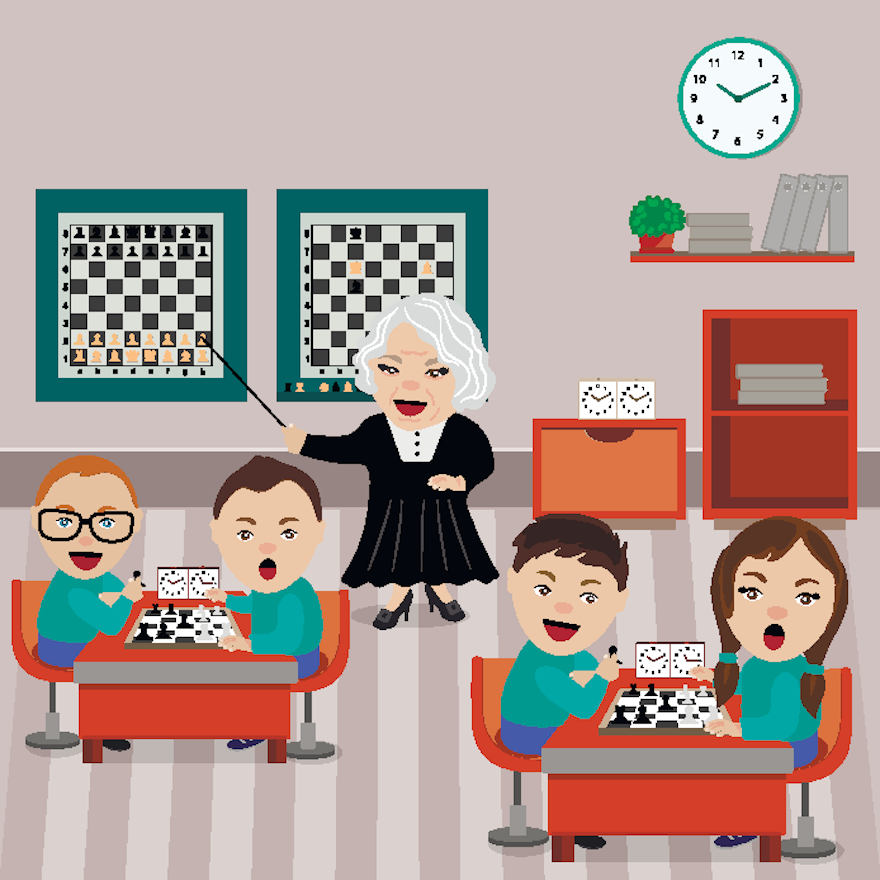Running a school chess club can be very rewarding and schools are usually supportive of such a venture. I started a school chess club back in 2017 when my boys were aged 7 and 5. I contacted the head teacher and offered to run a lunchtime chess club. The school was extremely supportive and I ran the club for 3 years for children aged 5 - 11 until my boys moved to a different school. I learned many things from this experience and wanted to share tips for teachers, parents or coaches who might be interested to set up a club at their school.
This is a 5 part series that will cover the following topics:
- Room and Equipment
- Instruction vs play
- Getting everyone involved
- Keeping it fun
- Running tournaments and ladders
3. Getting everyone involved
Most likely you will have a spread of abilities from children who have never played before to some that know how the pieces move but little more through to more experienced players. With a wide spread of abilities you need to ensure everyone is engaged and able to participate.
Never played before
Several children will likely have never played chess before and won't know how the pieces move let alone how to set up a board and play a full game. Mini-games are perfect for helping these children learn how the pieces move and capture by playing fun games. Start them off with a mini-game like 5 pawns vs a rook. Explain the basics and let them get going. To see details of this mini-game see 5 Tips for Helping Children Learn Chess. Initially you will need to supervise these children a lot as they they start to learn how the pieces move but they will quickly pick it up and be able to play without assistance. It is not unusual to see younger children keeping their hand on their piece after making their move. Gentle encouragement to let go of their piece and wait for their opponent to make their move may be required.
Beginners
Children who know how the pieces move and how to set up the starting position are able to play a full game of chess. They likely won't know all the special moves such as castling or en-passant but they are able to play a full game but may ask a number of questions during the game. A common trait at this level is making lots of pawn moves and happy to give up pieces for pawns. They tend to focus on how many pieces they have taken from their opponent rather than which pieces and their value. It is not uncommon to see them each counting how many pieces they have captured. When they are in check they will invariably move their king and not look to see if they can capture the checking piece or block by putting a piece inbetween.
Competent players
Depending on your school and club you may well have a few children who know the rules of chess and have some understanding of piece value and some basic opening knowledge. They will need little assistance and actually can help give guidance to beginners and those who haven't played before. Children love to share their knowledge with other children and this can work really well. You can also give them puzzles and tactics to look at if you have a spare board. Often other children will gather around and try to help and work together on a solution. As with any children giving them some tips and advice either during or after their game can be productive as they are often receptive to learn. Whilst mini-games are often used for helping beginners learn there are a number of more advanced mini-games such as mazes and games like two bishops vs a queen that will prove challenging even for experienced players. These add to the variety more of which will be covered in the next part of this series.
Part 4 of this series will cover how to keep children engaged and enjoying the chess club. Ranging from keeping a relaxed welcoming atmosphere to a variety of fun chess related activities.

